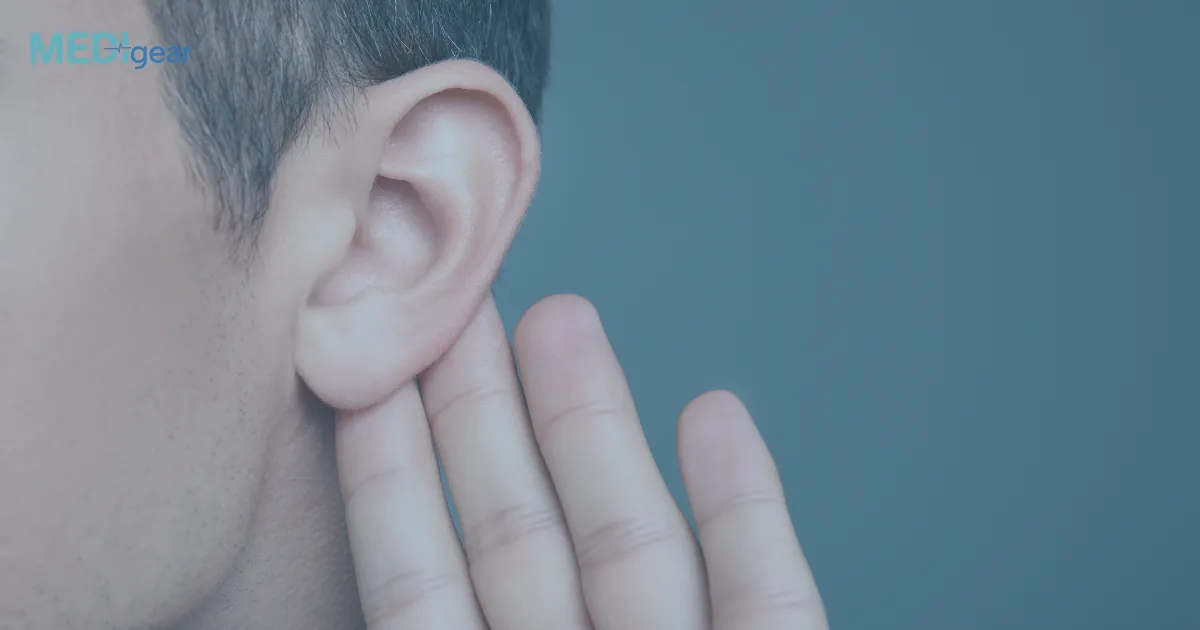Advances in wearable medical technology have led to the development of ear-based biosensors, compact devices capable of continuously monitoring blood flow, oxygen saturation, and cardiovascular health with remarkable precision.
By leveraging the unique physiology of the ear — rich in blood vessels and close to the skin surface — these biosensors enable non-invasive, real-time health monitoring for both clinical and personal applications.
Understanding the Principle of Ear-Based Biosensors
Ear-based biosensors, often integrated into earbuds or earpieces, rely primarily on optical and acoustic sensing techniques to measure blood flow dynamics.
These devices detect subtle physiological signals by monitoring how light or sound waves interact with blood vessels beneath the ear tissue.
The two most common technologies used are:
- Photoplethysmography (PPG)
- Laser Doppler Flowmetry (LDF)
1. Photoplethysmography (PPG): The Core Technology
Photoplethysmography (PPG) is the same optical method used in most pulse oximeters and smartwatches. It measures changes in light absorption that occur as blood pulses through the arteries.
Here’s how it works:
- A light-emitting diode (LED), typically infrared or green, illuminates the skin of the ear canal or earlobe.
- A photodetector measures how much light is absorbed or reflected by the blood.
- As blood volume increases during a heartbeat, more light is absorbed; as it decreases, more light is reflected.
- These changes generate a waveform corresponding to blood flow and pulse rate.
Because the ear is less affected by motion artifacts and has stable blood perfusion, ear-based PPG often provides more accurate and continuous readings than wrist or finger sensors — especially during exercise or sleep.
2. Laser Doppler Flowmetry (LDF): Measuring Microcirculation
Some advanced ear biosensors use Laser Doppler Flowmetry, a technique that measures blood flow velocity by analyzing how laser light scatters when it hits moving red blood cells.
- A low-power laser is directed into the ear tissue.
- The moving red blood cells cause a Doppler shift in the reflected light.
- This shift is analyzed to calculate the speed and volume of blood flow in microvessels.
LDF-based ear sensors provide highly sensitive readings, making them valuable in clinical research, sports medicine, and vascular diagnostics.
Why the Ear Is an Ideal Site for Blood Flow Monitoring
The ear — particularly the earlobe and ear canal — offers several advantages for biosensor placement:
- High vascularity: The ear has an abundant blood supply, allowing for accurate detection of hemodynamic changes.
- Stable temperature: The ear’s relatively constant temperature reduces signal variability.
- Minimal movement interference: Compared to the wrist or fingers, the ear experiences fewer motion artifacts.
- Proximity to the brain: It allows integration with neurological and cardiovascular monitoring systems for comprehensive assessments.
These factors make ear-based biosensors especially useful for ambulatory monitoring, sleep studies, and fitness tracking, as well as in critical care settings.
Applications of Ear-Based Blood Flow Monitoring
- Cardiovascular Assessment:
Continuous tracking of heart rate, cardiac output, and blood perfusion during rest and activity. - Sleep and Stress Studies:
Monitoring autonomic nervous system activity through heart rate variability (HRV) and blood flow fluctuations. - Anesthesia and Critical Care:
Ear sensors can monitor oxygen saturation (SpO₂) and perfusion in patients where peripheral readings are unreliable. - Sports and Fitness:
Providing real-time insight into cardiovascular performance and recovery metrics. - Early Detection of Circulatory Issues:
Helping detect conditions such as hypoperfusion, vasoconstriction, or microvascular disease.
Advantages of Ear-Based Biosensors
- Continuous, non-invasive monitoring of blood flow and oxygen levels
- High signal stability during movement or temperature changes
- Compact, comfortable design for daily wear
- Integration with smart devices for remote health analytics and telemonitoring
Future Directions
Next-generation ear-based biosensors are being developed with multimodal sensing capabilities, integrating:
- Temperature and ECG sensors for more comprehensive health data
- AI-driven algorithms for real-time interpretation of circulatory and metabolic parameters
- Wireless connectivity for seamless data transmission to healthcare providers
As the field advances, ear-based biosensing could play a transformative role in preventive medicine, remote monitoring, and personalized cardiovascular care.
Conclusion
Ear-based biosensors represent a breakthrough in non-invasive blood flow monitoring, combining comfort, precision, and continuous data collection.
By using optical and Doppler-based technologies, they allow clinicians and individuals alike to track vital cardiovascular parameters in real time — paving the way for smarter, data-driven healthcare solutions.
Disclaimer
This article is intended for educational and informational purposes only. It should not be used as a substitute for professional medical advice, diagnosis, or treatment.
Clinicians and users should follow device-specific guidelines and consult healthcare professionals for interpretation of biosensor data.






